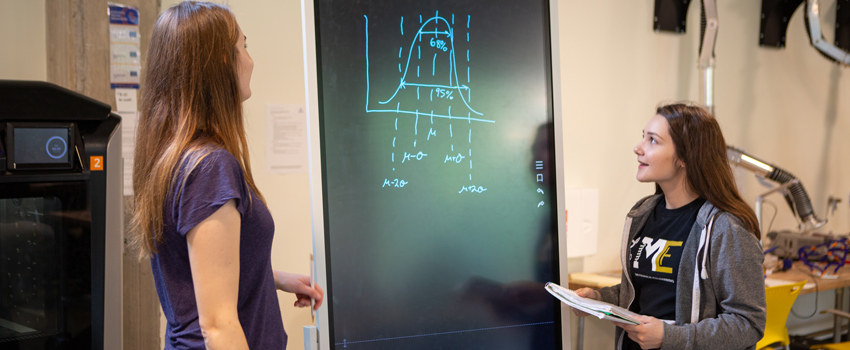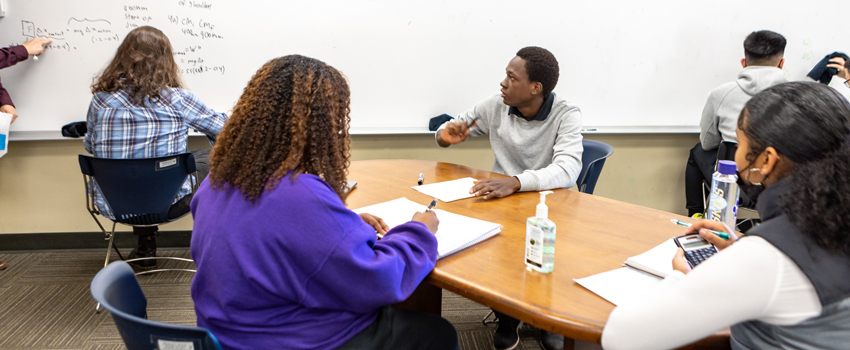This page covers some of most commonly asked questions on choosing classes, meeting major requirements, and finding academic support. We encourage you to meet with an adviser if you have additional questions or would like support clarifying your academic and personal goals.

Choosing classes
Start by determining what general education requirement courses you still need to complete before graduation. To do this, run a Degree Audit to see how many Arts & Humanities, Social Science and/or Diversity credits you have left.
If you still have general education credits to complete, find a general education course that would be of interest to you. You can use the search tools in MyPlan to find appropriate courses, or you can check out our suggested general education courses for your field. These are listed under “Choose meaningful general education courses” on the engineering Area of Impact pages.
If you’ve already satisfied your general education requirements, you have the flexibility to take any course as an elective.
There are a variety of different courses offered at the University of Washington that satisfy the English Composition requirement. To see the full list, search “C” or “Composition” in the search box in MyPlan. You can then read the course descriptions and view any registration restrictions.
The most common English Composition courses students take include: ENGL 111, ENGL 121, ENGL 131, ENGL 182, and C LIT 240. There is no one “right” English Composition course to take as an engineering student.
That said, it is less common for engineering students to take one of the ENGL 19X or 29X English Composition courses because these courses are each linked with a general education course which must be taken during the same quarter. The papers assigned in the English Composition course are the papers required by the companion course. Most engineering students do not have room in their schedules to take two general education courses in one quarter due to the math and science courses they must fit in.
You can read the Undergraduate Advising page for more information about English Composition at UW.
For maximum flexibility, we recommend taking General Chemistry (CHEM 152). CHEM 152 is a graduation requirement for all but three of the engineering majors and can be used to satisfy requirements for all but one. These majors include Electrical & Computer Engineering (ECE), Aeronautical & Astronautical Engineering (A&A) and Human Centered Design & Engineering (HCDE). ECE is the major where CHEM 152 is not a graduation requirement.
Alternatively, you can compare which course(s) will satisfy requirements for your specific majors of interest. Look at the sample 4 year plans for your preferred majors and note the courses that have a star next to them. To see the overlap in requirements between majors in one place, take a look at this chart.
Note: Courses with a star on the 4-year plan/highlighted in purple on this chart must all be completed in order to graduate from that major.
Reference the sample 4-year plans for majors you’re interested in to see what programming course(s) they require. Most engineering majors require either a course from the Introduction to Computer Programming series (CSE 12X) or Beginning Scientific Computing (AMATH 301) to graduate. Some majors allow you to choose between the two.
CSE 12X: Take the CSE 12X self-guided placement test to determine which course in the series to start with.
AMATH 301: The topics covered in AMATH 301 are the same each quarter, but the programming language in which it is taught varies. In autumn and spring quarters AMATH 301 is taught using MATLAB, while in winter quarter it is taught using Python.
Once you have completed the placement requirements you should focus on completing enrollment requirements for majors of interest. Enrollment requirements are prerequisites for a major’s upper-division (300 and 400 level) courses. The enrollment requirements for each major are on this chart.
In the autumn and winter quarter of the first year it is generally recommended that ENGRUD students take two STEM courses (one math and one science) and a general education course. This allows you to make progress toward degree requirements while you adjust to the rigor of coursework at UW. By autumn quarter of the second year students should expect to take three STEM courses at a time.
In some cases, however, it may be necessary to start taking three STEM courses a quarter as soon as spring quarter of the first year. For example, students interested in Bioengineering, Chemical Engineering, and/or Environmental Engineering who did not bring in credit for chemistry, physics, or calculus should plan to take CHEM 162, PHYS 121 and MATH 126. Check out the sample 4-year plans for more information.

Meeting credit and grade requirements
It depends on whether the course carries an A&H designation and on how many quarters you take. Refer to the Foreign language courses and general education requirements page for more information.
In order for ME 123 to count toward an engineering degree requirement, it must be graded numerically. It will also count as A&H credit. If graded CR/NC it will only count toward A&H credit. Therefore, engineering students looking to take ME 123 as an engineering degree requirement should register for the numerically graded section. ME 123 is offered every quarter (autumn, winter, spring, summer). There are usually two sections offered: one that is set up to be graded numerically and one that is set up to be graded as credit/no credit. If a student registers for the credit/no credit section and needs to switch into the numerically graded section, they should contact the course instructor ASAP at the start of the quarter.
More information on credit/no credit and other grading systems is available here.

Academic resources
The Engineering Academic Center (EAC) offers a supportive, communal study space.
Stop by to:
- Work on homework & prepare for exams with other engineering students
- Access materials for exam preparation
- Drop-in tutoring for calculus, science and engineering fundamental courses
- Available Monday through Thursday starting the second week of the quarter
- Meet with an Academic Success Coach 1:1 about topics like time management, goal setting and other study strategies
Additional resources:
- If you’re seeking tutoring in the evening hours and/or exam review sessions, check out the Center for Learning and Undergraduate Enrichment (CLUE)
- Academic Support Programs also offers online resources including study strategies for math and science courses
- Refer to the student support resources page for a complete list of available resources
“Pre-health” students are students who intend to enter a health professional field such as medicine, dentistry, pharmacy, physical therapy, occupational therapy and more. Pre-health is not a major or a minor. You can major in anything and go into a health professional program as long as you meet the program’s prerequisites.
Consider using the following pre-health resources:
- Web resources:
- Health Interest Area page on Career & Internship Center website
- Pre-Health @ UW website
- Chemical Engineering + Pre-Health webpage (includes sample plan of study)
- Bioengineering + Pre-health sample plan of study
- Explorehealthcareers.org
- American Association of Medical Colleges (AAMC.org)- pre-med planning worksheets, admission data and more
- People:
- Advisers: Help with exploring majors and courses and ways to combine major requirements with pre-health requirements
- Career Coaches: Help with questions about which health profession would be a good fit; how to get clinical, research, and leadership experience; and when/how to apply to health professional programs
There are many ways to make an impact in the field of health and medicine as an engineer if you ultimately decide pre-health isn’t the pathway for you. Check out the Engineering Areas of Impact page for Health and Medicine for some guidance and inspiration.